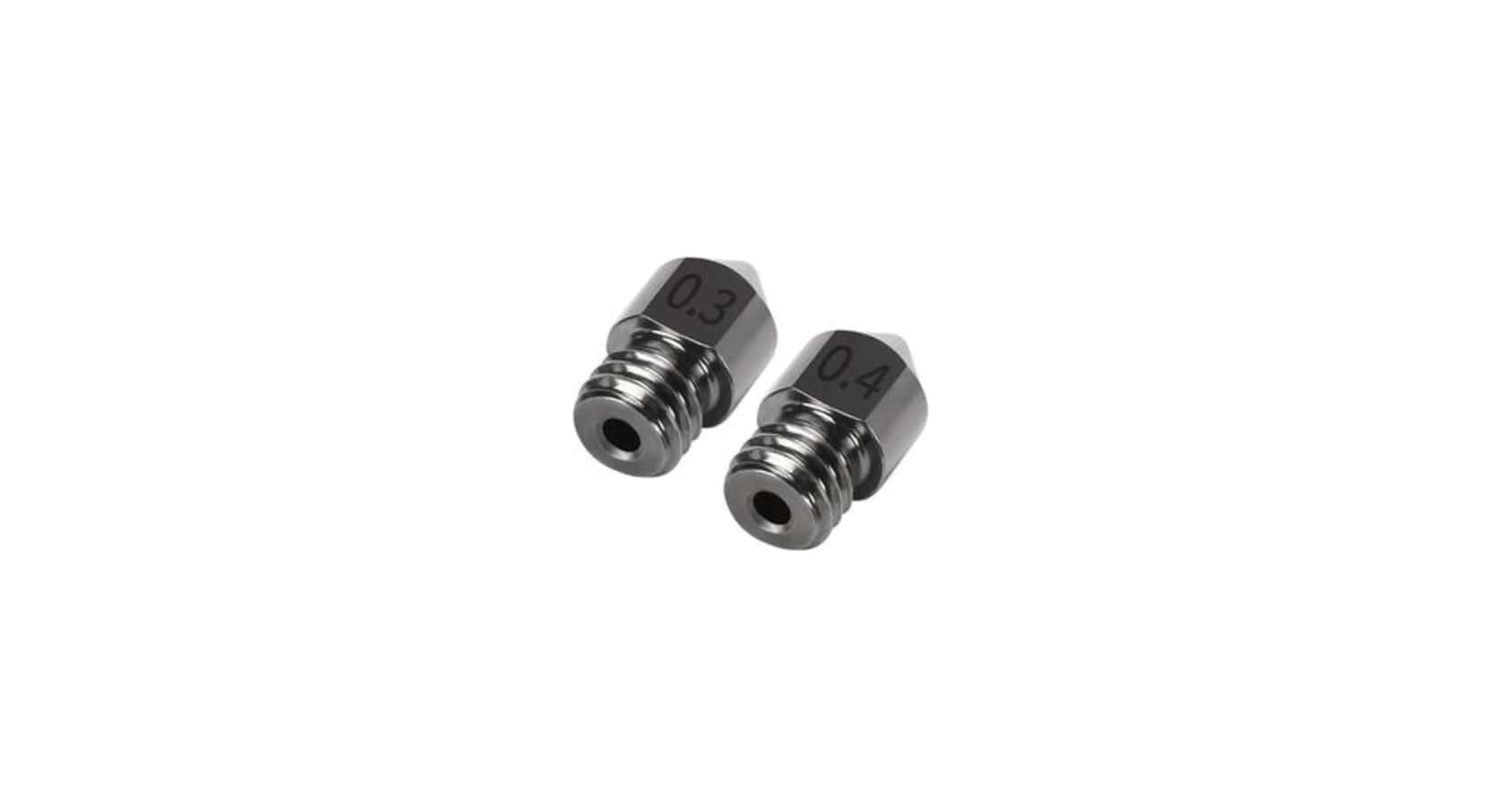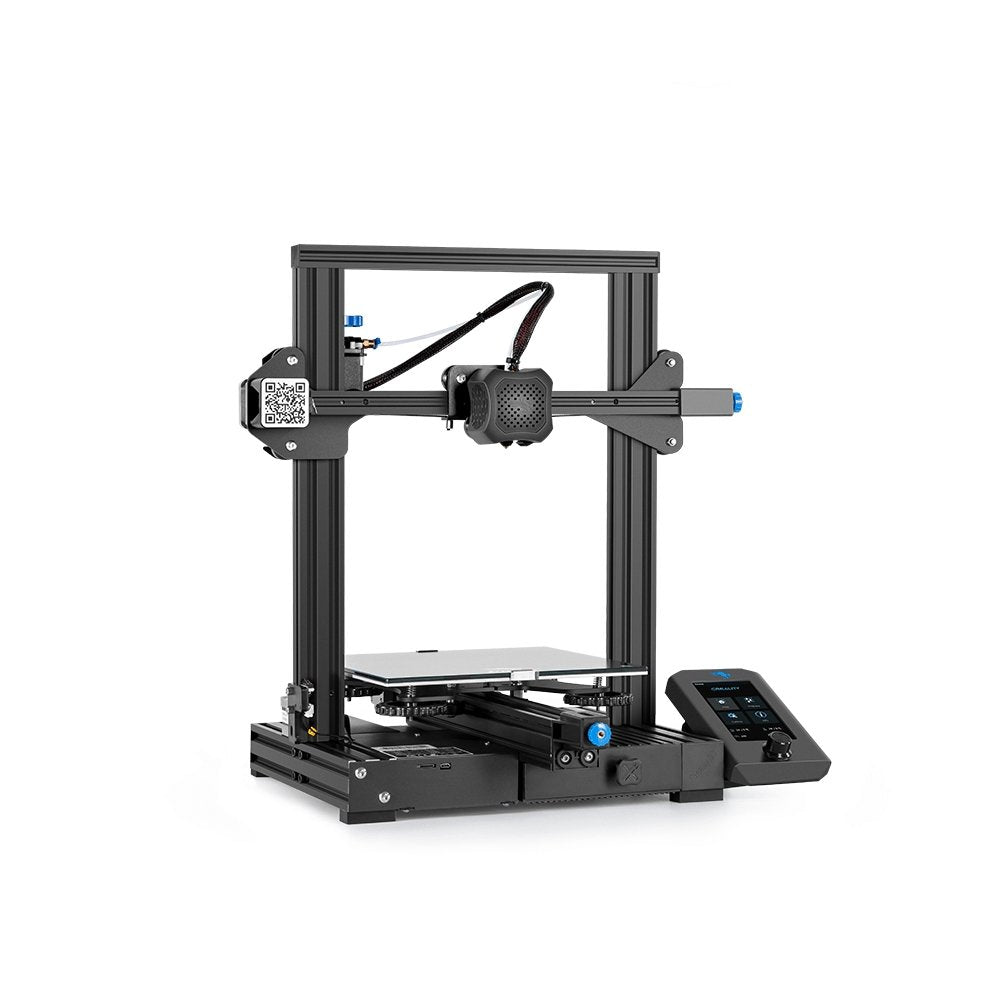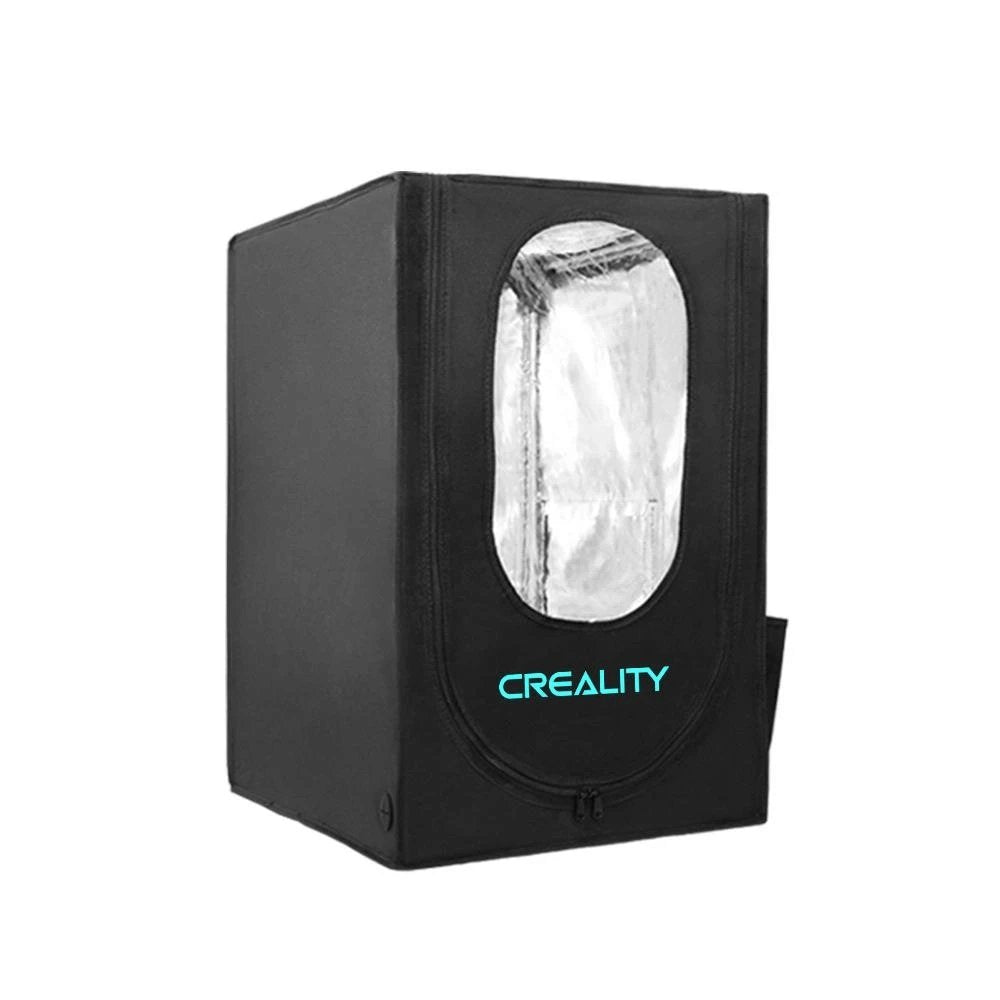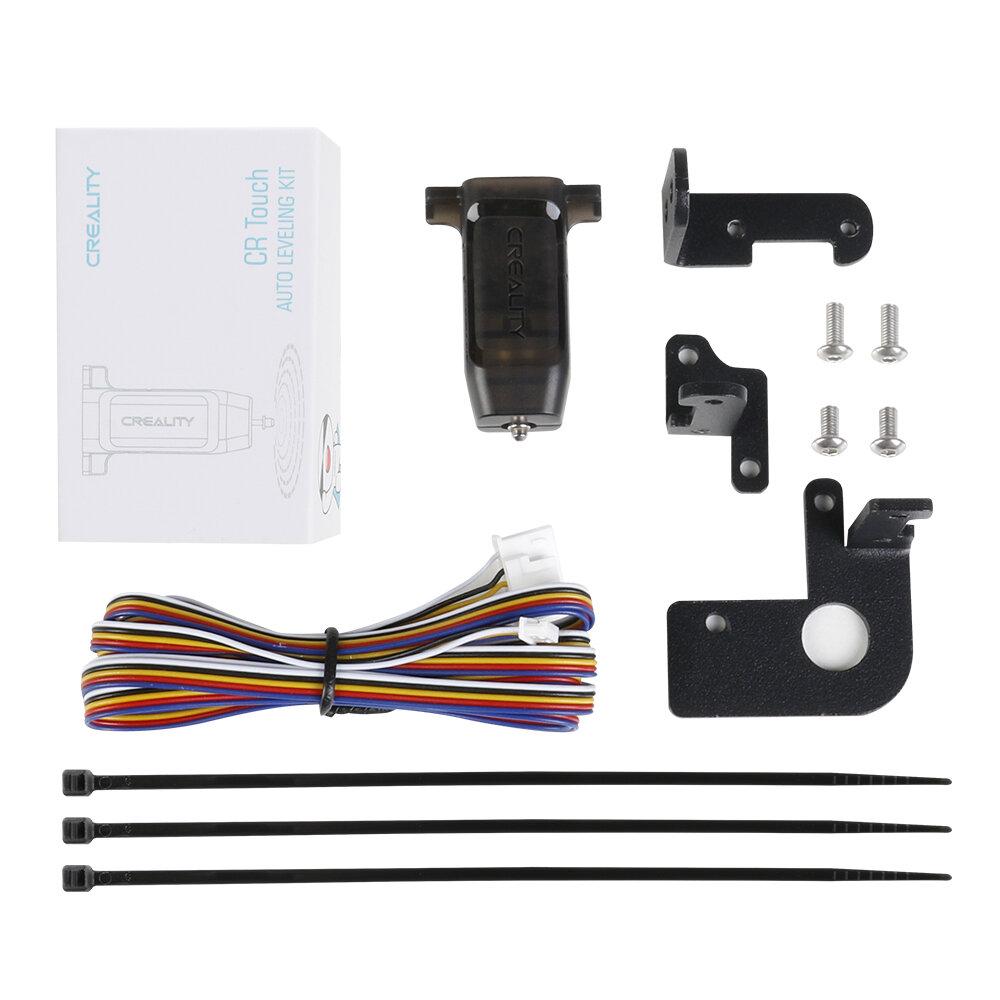When dialing in a 3D printer, the nozzle is often overlooked. Read on for an in-depth look into 3D printer nozzle types, size, and material.
There are so many things to consider when 3D printing; it’s almost overwhelming. We could go on and on listing the multitude of settings that need to be reviewed even before starting a print, not to mention the settings needed to achieve the best quality prints possible.
One part setting that is often overlooked is the nozzle. Yet, as the last part to be in contact with the filament, it has a significant impact on print time and quality. Selecting the correct nozzle is therefore an important next step in improving your 3D printing skills.
Knowledge of different nozzles’ impacts on the overall 3D printing process is enough to send most of us makers off to the races. In this article, we’ll review the different nozzle options on the market and help you figure out which options are best for you.
The Importance of Nozzles
The nozzle is the mechanical part of the 3D printer that extrudes the filament. It conducts the thermal energy provided by the heating cartridge and block to the filament, melting it. Based on this information, one could assume that three major characteristics are integral to a nozzle’s design: its size, material, and inner diameter.
The bigger the nozzle, the more mass and surface area available for transferring heat to the filament, making this process more effective and capable of higher extrusion speeds. Thermal conduction also relates to the nozzle material, as each material conducts energy differently based on its properties.
Lastly, the inner diameter of the nozzle affects the amount of plastic extruded per second, a property known as flow, which also determines the maximum extrusion speed. The inner diameter also relates to final part accuracy: Smaller diameters allow for thinner layers and walls to be printed.
In summary, all three nozzle characteristics can have a large impact on how long your part takes to print as well as the quality of the final object. Usually, a compromise between these two factors must be reached. In the next sections, we’ll detail each of these aspects separately and present a few designs available on the market.
Size

As we just mentioned, the overall size of a nozzle will determine how well it can heat up the filament during extrusion. By nozzle size, we mean the physical mass and length of the part. This should not be mistaken for the bore diameter, which is a measure of the inner space through which the filament is fed.
STANDARD
There aren’t that many different nozzle sizes available on the market, as the shaft length of the nozzle is dictated by the block type and size. The current standard dimensions for these parts comply with V6 hot ends and MK8 extruders, with a total length of 12 to 13 mm from the tip to the end of the M6x1 thread.
VOLCANO
The so-called Volcano hot ends are specifically designed for higher speeds and temperatures, with claims of processing at least three times more plastic than the regular V6 hot ends. For such reasons, Volcano requires a lengthier nozzle, usually 21 mm from end to end to promote better thermal conduction.
SUPERVOLCANO
The third size option, although rarely seen in stock 3D printers, is the SuperVolcano. As the name implies, it is an even longer version of the Volcano nozzle, measuring an almost ridiculous 50 mm in length. To handle such enormous dimensions, the heater cartridge is rated for 80W and can reach temperatures of 500 °C.
Material

Moving on, the next nozzle property on the list is the material. All nozzles produced today are made of some kind of metal due to its relatively high thermal conductivity and tight fabrication tolerances. With that said, different metals are used in nozzle fabrication. Each has unique properties, which influence the 3D printing process in different ways. Let’s talk about some of the most popular materials.
BRASS

Brass is by far the most common metal used for 3D printer nozzles. This copper-zinc alloy offers a great heat transfer at a relatively low cost. However, while these nozzles tend to be inexpensive, brass isn’t the most resistant material and is highly vulnerable to wear.
Brass nozzles can deteriorate externally from every bump or scrape that might happen during the 3D printing process. Even though this is not immediately noticeable, the wear and tear builds up slowly over time, which can truly compromise important external dimensions of the nozzle.
Special 3D printing materials like carbon fiber and metal-filled filaments contain abrasive particles that can ruin the nozzle’s internal surfaces if used regularly. A damaged internal bore can compromise print quality, and the catch is, this erosion is virtually impossible to spot and diagnose. For this reason, brass nozzles are better used for printing non-abrasive materials.
- Maximum temperature: 300°C
- Best used with: Non-abrasive filaments such as PLA, ABS, PETG, Nylon, and TPE
STAINLESS STEEL

Stainless steel is another popular material used in nozzles, as it provides a slightly better wear-resistance than its brass counterparts. They also prevent, to some degree, melted plastic from getting stuck to its surfaces, keeping it tidier. Moreover, these nozzles don’t contaminate the print with lead, which usually happens with brass nozzles. Stainless steel nozzles are therefore theoretically suitable for food-grade materials.
Stainless steel allows for a wider variety of filaments to be used but is still not recommended for heavy usage of abrasive materials. It’s also less thermally conductive in comparison to brass.
- Maximum temperature: 500 °C
- Best used with: Non-abrasive filaments and light use of abrasive materials such as NylonX, carbon fiber, glow-in-the-dark, metal-filled, wood-filled, and ceramic-filled filaments.
HARDENED STEEL

Hardened steel nozzles are a major upgrade, as they’re tough enough for frequent use of abrasive materials and offer literally years of usage without replacement. However, this material has an even lower thermal conductivity than the previous two materials and takes longer to achieve the target temperature.
Being such a hard metal, the bore machining of these nozzles is also problematic. Some claim that its internal surface is not as smooth as other “softer” materials, possibly leading to less quality printing. Please consider all the above before committing to these nozzles, as they’re also more costly than the regular ones.
- Maximum temperature: 500 °C
- Best used with: All materials, including heavy use of abrasive materials
PLATED COPPER

Plated copper provides an increased thermal conductivity. The nickel coating used has low surface energy which reduces plastic adhesion and has the potential to increase the flow rate. Copper alloy also performs better at higher temperatures than other nozzles. Great for sticky materials like TPUs and PET-G as well as extreme temperature polymers like Ultem.
Nozzle Diameter
The final and perhaps most delicate nozzle characteristic discussed in this article is the internal bore diameter. Nozzle diameters generally range from 0.1 mm all the way up to 1.2 mm. This gives the 3D printer user a great degree of flexibility. With so many options, which one is the one to go with?
In the end, it’s all about balancing how much filament is extruded and how fast. The absolute standard in 3D printers today is the 0.4-mm nozzle, which is found in almost all popular machines. This diameter provides a great balance between speed and precision.
It’s worth noting that the recommended layer height range is somewhat dependent on the nozzle diameter. As a general rule, the maximum layer height values should not exceed 80% of the nozzle diameter. For example, a 0.4-mm nozzle has a recommended maximum layer height of 0.32 mm.
It goes without saying that larger nozzles will extrude more material through thicker layer heights and widths. On the other hand, smaller nozzles (less than 0.4 mm) can yield amazingly detailed prints with barely visible layer marks. Unfortunately, it comes with a reduction in print speed and an increased possibility of clogging since the bore diameter is so small.
LARGER NOZZLES (> 0.4 MM)
- Reduced print time
- Fewer nozzle-related print errors
- Recommended for abrasive material (less prone to clog with particles)
SMALLER NOZZLES (< 0.4 MM)
- Higher precision
- Higher quality overhangs
- Supports are easier to remove
What's the Best Nozzle?
As you can see, it’s very important to give serious thought to which nozzle you’re using. Understanding the advantages and disadvantages of different nozzle designs and materials can greatly improve your machine’s performance and the quality of your prints.
So which nozzle is the best? That’s up for you to decide. It’ll come down to the array of printing materials you use and whether you’re more willing to compromise on quality or speed.







